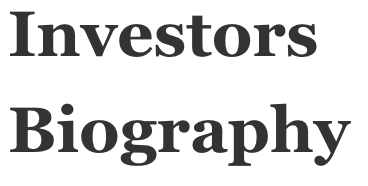Michael Dell, the founder of Dell, Inc., and the chairman and CEO of Dell Technologies, established the company that would become Dell in his college dorm room. Through his visionary leadership, it grew into the world’s No. 1 seller of personal computers (PCs). As PC sales fell in the new millennium, Michael successfully repositioned Dell as a leading manufacturer and seller of other technology products. With a net worth of $50.9 billion, he ranks among the richest people on the planet.
Early Life and Education
Michael Saul Dell was born on February 23, 1965, in Houston, Texas. The son of an orthodontist father and a mother who worked in finance, he showed an aptitude for business as a teenager, buying stocks and selling newspaper subscriptions using his data research skills to earn $18,000 in just one year.
Along with business, Michael had a passion for technology. At 15, he purchased one of the earliest Apple computers and, rather than using it, dissembled it to learn its inner workings and see whether he could reassemble it. He later bought another computer with his newspaper-business profits.
After finishing high school, he enrolled at the University of Texas at Austin. It was there, in his dorm room, that he married his business and technology interests to launch the business for which he would become known.
Founding Dell
Despite his parents’ wishes that he become a doctor, Michael didn’t last long at college. By spring break of his freshman year, he was racking up monthly PC sales of $80,000 through PCs Limited, a business he had started after moving to Austin. He left college before the end of his freshman year to focus on the company.
Michael’s early success lay in capitalizing on a gap in the PC market. Consumers at the time could purchase computers only in stores, and the choices were limited to what each manufacturer chose to offer. Drawing on his computer-assembly skills, Michael built custom PCs from scratch and sold them by phone.
By only ordering parts for existing orders, he was able to keep operating costs low. This translated to PCs Limited being able to offer prices that were 10 percent lower than its competitors. Michael’s implementation of a first-of-its-kind toll-free tech-support line, meanwhile, kept customers happy. On the strength of his innovation, the company’s sales exploded.
Dell Expands
The success was so great that, after changing PC Limited’s name to Dell Computer Corporation, Michael took the company public in 1988 with a $30 million initial public offering. It was only four years after he had started the business in his dorm room, and he was only 23 years old.
Under his leadership, Dell Computer continued to grow, expanding globally onto several continents. By end of 1991, it was a $679-million-per-year business, and Michael appeared on the cover of Fortune. The following year, he became the youngest Fortune 500 CEO in history when Dell Computer broke onto the publication’s list of the world’s top 500 companies.
As the internet gained popularity over the ’90s, Dell Computer became an early adopter of e-commerce, making its first online computer sales in July 1996. By the close of the decade, the company was tallying online sales of $18 million a day. With the company he created (now known as Dell, Inc.) having turned into the planet’s most profitable manufacturer of PCs, Michael Dell stepped down as CEO in 2004.
Return to Dell
After his exit from the day-to-day leadership of Dell, Inc. (though he remained in his role as chairman) Michael leveraged his business expertise to serve in positions on the World Economic Forum, the International Business Council, and the US President’s Council of Advisors on Science and Technology.
In his absence, Dell, Inc., struggled. The customer service division he had built and prioritized underwent an overhaul after it was subject to numerous complaints. Meanwhile, the company faced a recall of 4.1 million computers.
The adversity caused Dell, Inc.’s reputation as a PC manufacturer to fall. Michael returned to Dell, Inc., as CEO in 2007 to lead a companywide shift away from PCs and to product lines like corporate software. The following year, thanks to new products like the Inspiron 8000 laptop, its sales reached a new high.
The global recession that began in 2008 slowed Dell Inc.’s growth, however, and after sales of PCs began falling across the industry in 2012, Michael attempted to take the company private for the first time in 25 years. After fighting off a heated takeover bid, he and his investment partners succeeded in making Dell a private firm, though Michael himself retained only a 16 percent stake in the business.
In 2016, continuing the company’s pivot to non-PC products, Dell, Inc., bought data-storage firm EMC for a whopping $67 billion. The acquisition made Dell, Inc.’s parent company, Dell Technologies, the largest private technology company on the planet.
Dell Technologies once again became a public company in 2018. With Michael continuing to serve as CEO, it has branched out into other cutting-edge technology areas like artificial intelligence. Still under his leadership today, Dell Technologies is one of the world’s most successful companies. In 2022, it ranked No. 31 on the Fortune 500.
Philanthropy
In 1999, during his initial tenure as CEO of Dell, Michael partnered with his wife, Susan, to establish the Michael and Susan Dell Foundation. Since then, the foundation has committed $1.23 billion in donations, much of which has gone toward supporting children living in poverty around the world.
He has also given back to his alma mater, donating tens of millions of dollars to establish new facilities as well as augment existing ones at the University of Texas at Austin. These include Dell Medical School and Dell Children’s Medical Center. In keeping with his commitment to helping children, Dell Children’s underwent an expansion in 2022 that has allowed it to care for more pediatric patients.

